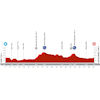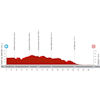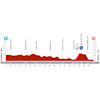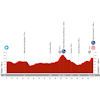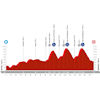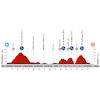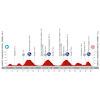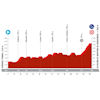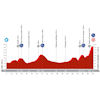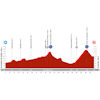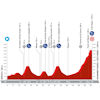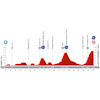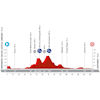The Spanish Grand Tour is the least geographical adventurous of all Grand Tours. It will be the fifth foreign Big Start in its 89-year history, after Utrecht, Netherlands (2022); Nîmes, France (2017); and Assen, Netherlands (2009). Lisbon also hosted the first foreign start in 1997.
The 1st stage will be a flat ITT of 11 kilometres between Lisbon and coastal town Oeiras. Stage 2 then travels north from Cascais to Ourém, while stage 3 starts in Lousa to finish in Castello Branco.
La Vuelta returns to home soil on the fourth day of action for a finish in the remote region of Extremadura. Pico Pitolero is the end station of stage 4. The 13.8 kilometres climb at 7% offers double-digit material from kilometre 9 onward until it evens out after the flamme rouge.
La Vuelta turns south after Extremadura for a couple of Andalucian stages, starting with a race to Sevilla. Another stage is a hilly test to Yunquera in the Sierra de las Nieves before the riders are expected to shine in Córdoba, although de Alto de 14% in the finale could present a challenge. The race then continues on a route between Úbeda to Cazorla before the Sierra Nevada is expected to detonate the fireworks. Stage 9 sets off from Motril to enter the highest mountain ridge of mainland Spain. The route takes in the Alto del Purche (9.1 kilometres at 7.6%) before a double ascent of Alto de Hazallanas (7.3 kilometres at 9.6%) precedes the long downhill into Granada.
Week 2
Yet, the lion’s share of the race is played out in the northern part of Spain. The riders fly across the country on the rest day to the northwestern corner of Spain, where Galicia will hosts four stages. The 10th stage is a race through the hills of white wines Vallhalla Rías Baixas, leading from Ponteareas to a downhill finish in Baiona, before stage 11 starts and finishes in Padrón with a series attacker-friendly climbs in between. Stage 12 travels on undulating terrain to an extended finish climb on the Montaña Manzaneda.
The fourth Galician race – stage 13 – sets off from the capital Lugo to finish atop the Puerto de Ancares after 12.3 kilometres of hardship at 9.3%.
Also in the north of Spain you’ll find the Cuitu Negru. The mountain is home to the Valgrande-Pajares ski station and it takes 19.5 kilometres at 5.2% of climbing to get there. The first 7 kilometres are negligible false flat, but then it begins. One of the the hardest sectors sits at 7.5 kilometres (11% gradients) before the finish, while the last 2.5 kilometres are just horrific. The section averages almost 13% and features the steepest ramp – 24% – just before the finish line.
Week 3
Some 150 kilometres to the southeast of the Cuitu Negru towers a brutal climb to the Lagos de Covadonga. The scenery is spectacular and the same goes for the climb. The 12.5 kilometres ascent to the lakes comes with an average gradient of 6.9%, which is really just a nugatory statistic as double digit ramps are spread out over the ascent. The first 7 kilometres are especially brutal.
We stay in northern Spain with a race to Santander before stage 18 takes place in the Basque Country. The riders set off from Vitoria-Gasteiz to travel on lumpy terrain to Izki Natural Park, while Rivas de Tereso and Alto Herrera will be the intermediate climbs. The 19th stage traverses the vineyards of La Rioja before finishing atop the Alto del Moncalvillo.
The penultimate test is a tough mountain stage – with over 4,000 vertical metres – between Villarcayo and the summit of Picón Blanco in Burgos. The 7.6 kilometres long finish climb leads to an abandoned military base at 1,468 metres above sea level. The average gradient of 9.3% is biased as the ascent opens with relatively modest gradients, while it stretches for kilometres at over 10% in the second half.
In 2021, Rein Taaramäe attacked from the breakaway with 3 kilometres to go on the Picón Blanco. He soloed to the stage win and red jersey. It was the third day of that edition and the GC riders kept a low profile. Which will not be the case this time…
La Vuelta returns to Madrid for the final stage, but instead of the usual city circuit the riders are treated to an ITT.
Vuelta a España 2024: route, profiles, videos
Click on the images to zoom



